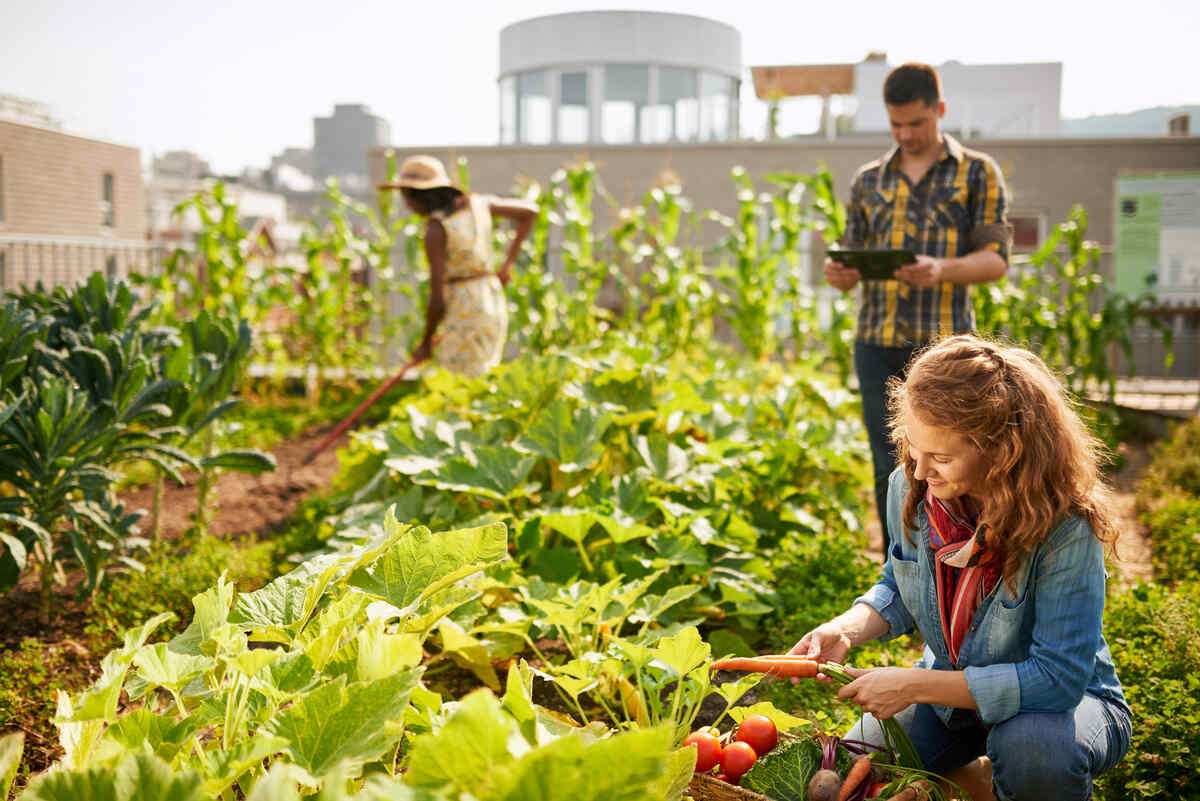Unknown Facts About City Blooming
Unknown Facts About City Blooming
Blog Article
Our City Blooming Statements
Table of ContentsExamine This Report on City BloomingThe 8-Minute Rule for City BloomingThe Best Strategy To Use For City BloomingCity Blooming - TruthsCity Blooming Things To Know Before You Buy
Intrigued in expanding food for sale in the City of Chicago? Below is a listing of frequently asked concerns relating to the rules and regulations that farmers must think about when intending a metropolitan farming job.
The zoning change does not change any kind of other codes handling composting, building permits, purchasing or renting City owned residential or commercial property, organization licenses or environmental contamination. There are existing codes that regulate these problems and they continue to be in full effect and may be appropriate to your task. Community gardens are normally possessed or taken care of by public entities, civic companies or community-based organizations and kept by volunteers.
Urban farms grow food that is planned to be offered, either on a not-for-profit or for-profit basis. As a result of their commercial objective, urban ranches require a service license. Yes. A community yard is permitted to offer excess generate that was grown on website if the sales are accessory or subordinate to the garden's key objective explained above.
The 10-Minute Rule for City Blooming
Composting is permitted but just for plant product that is produced and used on site. The quantity of compost product can not go beyond 25 cubic backyards at any type of given time according to the standards in 7-28-715 of the City's Municipal Code. Yes. Due to the fact that the dirt at the majority of new garden sites requires modifying, garden compost, dirt, timber chips, or various other materials can be obtained to build or enhance the growing area - landscaping.

If a building permit is required after that the hoophouse will be thought about an accessory structure. You can discover even more regarding the building authorization needs by getting in touch with the Division of Buildings. The 25,000-square-foot size limitation is intended to avoid a single community garden from dominating a provided block or interfering with the block's existing property or commercial character.
The limitation does not relate to gardens found in Public Open Space (POS) areas. Can there be greater than one community yard that is 25,000 square feet on a single block? Yes. The size limit puts on private yards, not to private blocks. No. Fence is not required, nonetheless, gardens that have big vehicle parking locations may be called for to install fencing or various other landscaping features.
An Unbiased View of City Blooming
B1 & B2 areas need that all commercial usage tasks be carried out indoors. Is secure fencing required for metropolitan farms? Fences might be called for, along with landscape design and testing, for particular car park areas and exterior work or storage space locations depending on location and the certain activity taking location.
Urban farms call for structure licenses More Help and zoning authorizations prior to building (sustainability). Various other types of city evaluation might be needed depending on details frameworks, tasks, dimension, landscape design, licensing, public heath and stormwater monitoring issues.
Yes. The sort of certificate is figured out by what is taking place at the website. The Division of Company Matters and Customer Security can help identify the details kind of business permit that's needed. Yes. Off street vehicle parking is needed for most commercial projects in Chicago. The called for variety of car parking spaces is based on the variety of workers functioning on website and not the square footage of the growing room.
A Biased View of City Blooming

A city ranch can sell garden compost material produced on site, however, the procedure has to abide with the regulations in 7-28-715 of the Chicago Municipal Code. Aquaponic systems are permitted indoors on metropolitan farms in lots of zoning districts.
Approximately 5 hives or colonies of honey bees may be kept as an accessory usage. Beekeepers should register with the Illinois Department of Farming. To learn more about the recommended zoning change you might contact the Division of Real Estate and Economic Growth, Bureau of Preparation and Zoning at 312.744.8563.
Farming in cities and city areas A city ranch in Chicago. Urban farming describes various methods of cultivating. https://issuu.com/cityblooming, handling, and distributing food in city areas. The term additionally puts on the area tasks of animal husbandry, aquaculture, beekeeping, and gardening in an urban context. Urban farming is distinguished from peri-urban farming, which takes area in backwoods at the edge of suburbs.
City Blooming for Beginners
, that look for to develop social networks started on a common values of nature and community holism. These networks can develop by way of official institutional support, becoming incorporated into regional community planning as a "shift community" motion for lasting city advancement.
Some of the first proof of metropolitan farming comes from Mesopotamia.
Report this page